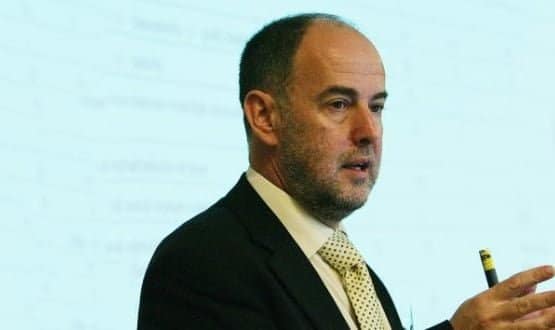Many – if not most – chief clinical information officers argue that they need a clinical role as well as their information role in order to be credible.
Not so Ian Jackson, newly appointed CCIO at York Teaching Hospitals NHS Foundation Trust.
His clinical background is working as a consultant anaesthetist for more than 20 years; but he comes to the CCIO role from medical management and maintains a parallel role as clinical safety officer.
“I have made the leap into a full time management role,” he says. “Like many hospitals we are going through major organisational change and I am fortunate to work in an organisation that recognises the importance of involving doctors as managers.”
He has been working in the CCIO role for some months – the title was made official in October 2012.
Developing in-house
York Teaching Hospitals has its own IT system developed in house – the Core Patient Database. Dr Jackson works as part of the IT team and its in house developers, translating clinical requirements into useful systems.
“It is really interesting for me because it is about helping programmers understand some of the clinical processes,” he says.
“I am very keen on explaining the clinical situation and allowing programmers to suggest solutions – what the clinicians say they need is not always the best solution.”
He has recently been supporting the development and implementation of electronic patient observations.
The in-house solution is an integral part of CPD, which means clinicians can easily call up information in lots of different places – on the wards, in theatres or in their office for example.
“Rather than having a bolt on solution and struggling to interface it with the main system, we are already able to look at information in all the places we need it to support patient care,” he says.
Of course there is a mix of reactions to the new system but Dr Jackson says: “The nursing staff have been absolutely amazing, embracing it whole heartedly.
“This is one of the first projects that has involved all nursing staff, from healthcare assistants upwards, and many of them have never had a need to go anywhere near an IT system before; so there is a huge educational role.”
It is a ward-by-ward roll out and word is spreading, he adds. “Of course you get the early adopters, but we are finding that once we complete a ward then people come to me and say that although they were sceptical, they have to take their hat off to the IT team, as it works really well. It’s very satisfying when the doubters become your biggest advocates.”
Merging organisations
One of Dr Jackson’s key tasks as CCIO is supporting the implementation of the trust’s IT system at Scarborough Hospital which, along with another facility in Bridlington, became part of York Teaching Hospitals in July.
“I am working with the rest of the team on this; liaising with the clinical teams at Scarborough and working with people to help them understand how things work and how things will be going forward,” he says.
There is a lot to do over the next six to eight months. “A lot of it is getting the groundwork done – the network, the email system, a unified telephone system and so on.
“It’s work that sounds easy but is quite complex,” Dr Jackson adds. “I am involved in my role as clinical safety officer at a technical level, for example with risk assessments and considering the patient safety implications.”
On the CCIO front, it is all about working with the clinical teams. “Part of that is saying: ‘Here is the system and what changes do we need to make to make this suitable for your involvement?’
“These kinds of discussion have helped with some of the integration work of bringing teams of clinicians together across the sites and creating one organisation out of the two.”
A practical example of where IT has supported this clinical integration is setting up electronic ways of bringing the teams together – for example video conferencing. “We can be a useful catalyst,” says Dr Jackson.
CCIOs support their organisations
The CCIO role is an important one, Dr Jackson believes. “As much as anything, it is a supporting role for the organisation.
“IT is crucial and IT worked very closely with our clinical colleagues even before I came on the scene. As clinical safety officer I enhance the patient safety perspective to system development. It is one of the central drivers here.”
He argues that his clinical manager roles put him at the heart of the organisation. He reports to the director of IT, the medical director and to the chief executive and is part of the clinical efficiency team, which he supports as clinical lead.
“Like everywhere we are looking at finding extensive savings year on year and each year it gets more difficult,” he says.
He has found the CSO training he undertook with NHS Connecting for Health to be invaluable in his new dual role.
“The risk assessment methodology has been very useful in other areas outside of IT, especially with the efficiency agenda,” he says.
“Putting risk assessment into savings schemes and using that same methodology is vital to ensure patient safety remains at the core of our service.”
So with patient safety, efficiency and IT as core components of his role, Dr Jackson is really able to get to the heart of how to use technology safely to deliver better quality and more cost effective care.

